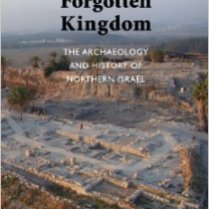The Megiddo Expedition
Megiddo is the jewel in the crown of biblical archaeology. Strategically perched above the most important land route in the ancient Near East, the city dominated international traffic for over 6,000 years — from ca. 7,000 B.C.E. through to biblical times. As civilizations came and went, succeeding settlements at ancient Megiddo were built on the ruins of their predecessors, creating a multi-layered archaeological legacy that abounds in unparalleled treasures that include monumental temples, lavish palaces, mighty fortifications, and remarkably-engineered water systems.
Website: https://megiddoexpedition.wordpress.com/
The Shmunis Family Excavations at Kiriath-Jearim
The Shmunis Family Excavations at Kiriath-jearim is a joint project of Tel Aviv University and the Collège de France, funded by Sana and Vlad Shmunis (USA). Israel Finkelstein of Tel Aviv University and Thomas Römer and Christophe Nicolle of the Collège de France direct the project. The staff of the expedition includes French, Israeli and American archaeologists. The first season of excavation took place in the summer of 2017.
Kiriath-Jearim is mentioned many times in the Bible: as a border town between the territories of the tribes of Judah and Benjamin, in the Ark Narrative, the list of returnees from exile and other places. The Ark Narrative and the strong polemic against the town in the Bible hint at the existence of a temple in late-monarchic times.
Website: https://kiriathjearim.wordpress.com/
Geoarchaeological investigation in the Negev Highlands
Begun in 2005, the Negev Highlands Research Project, led by Professor Israel Finkelstein of Tel Aviv University and Dr. Ruth Shahack-Gross of the Weizmann Institute of Science, is a multi-disciplinary investigation into the settlement oscillations of the Negev Highlands over the past 5000 years. The project utilizes both conventional archaeology and microarchaeological techniques to reconstruct subsistence economies, paleo-climate, and absolute dating of Negev sites during three major periods of settlement: the Iron Age IIA (c.900-BLANK BCE), Late Byzantine/Early Islamic (600-900 CE), and most recently, the Intermediate Bronze Age (c. 2500-1950 BCE).
Currently the Negev Highlands Research Project is investigating two Intermediate Bronze Age sites, Mashabe Sade and Ein Ziq, using geochemical analyses, XRF (W-ray fluorescence), phytolith and dung spherulite identification, and palynology, to determine subsistence strategies at the site, and in the larger picture, their roles in the complicated southern Levantine copper economy of the period. Simultaneously, an absolute dating scheme is using OSL (optically stimulated luminescence) and radiocarbon determinations to define both vertical and horizontal stratigraphy at the two sites, and to situate them within the poorly understood chronology of the Intermediate Bronze Age.
Epigraphy
Most of the texts written in ancient Israel and Judah were ink on papyrus. But these primarily administrative and literary documents were perishable and did not survive the journey down the millennia. The only texts that endured the harsh local climate were the relatively few that were written in ink on pieces of pottery (ostraca). The largest groups of these ostraca were discovered in the excavations of Samaria, Lachish and Arad.
First Temple period (Iron Age II) epigraphy is an important component in the study of biblical history, ancient Hebrew and the biblical text. Traditionally, inscriptions are dated based on:
- Their archaeological context. However, many texts are found in an unclear archaeological context, or first come to light in the antiquities market.
- The epigrapher’s creation of a typological structure of ancient Hebrew letters. This, however, is, by definition, not objective for it is often subject to considerations which are inevitably influenced by the researcher’s cognitive world.
Our research seeks to enhance the second of these points (“traditional” typology) by using automated algorithms to the study of epigraphy. The efficiency of these algorithms have been proven in a great number of applications – from the formation of genetic proximity trees to analysis of financial market data. Algorithms have also been applied to graphological examination of contemporary manuscripts; yet, the ancient methods of writing, the evolution of the alphabet through the centuries, and the damage done to the artifacts in antiquity, do not lend themselves to use of off-the shelf products (in other words, existing scanning and OCR technologies are not readily applicable to ancient ostraca inscriptions).
Therefore, we carry out in-house development of the required technologies in the following stages:
- Acquire better ostraca images.
- Produce automated facsimile.
- Examination of writing characteristics.
- Clustering and creating letter typology.
Our aim is to create algorithmics with autonomic analysis skills that do not require a researcher’s (subjective) involvement.
In addition to developing the computational abilities of handwriting analysis, we seek to improve data input by scanning the inscriptions using non-intrusive methods such as multispectral scanning techniques.
Website: http://www-nuclear.tau.ac.il/~eip/ostraca/index.html
Ancient DNA
Reconstructing the genetic profile of human populations and their livestock in Israel in the Bronze and Iron Ages using ancient DNA. We wish to trace population groups, examine historical continuity versus periods of crises, and to study the impact of mobility and migrations in the Near East on people and societies during these centuries.














